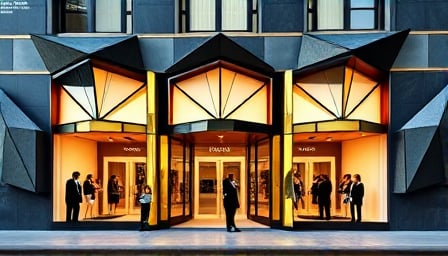Luxury Goods Sector Faces Prolonged Downturn, Kering’s Market Moat Remains Intact
Kering SA, a stalwart in the luxury goods industry, has seen its stock price take a hit in recent times. The company’s shares have failed to match their impressive performance from a year ago, with the current price significantly lower than its 52-week high. This decline is not an isolated incident, as the luxury goods sector as a whole is experiencing a prolonged downturn.
The sector’s woes have been exacerbated by the expected drop in quarterly sales from Kering and its peers, including LVMH. This has led to growing concerns among investors about the sector’s future prospects. However, some analysts remain optimistic about Kering’s ability to weather the storm, citing the company’s market moat as a key differentiator.
Key Factors Contributing to the Downturn
- Global Economic Uncertainty: The ongoing economic uncertainty has led to a decline in consumer spending, particularly in the luxury goods sector.
- Increased Competition: The rise of new entrants in the luxury goods market has increased competition, making it challenging for established players to maintain their market share.
- Supply Chain Disruptions: The ongoing supply chain disruptions have led to inventory shortages and increased costs, further exacerbating the downturn.
Kering’s Market Moat Remains Intact
Despite the current volatility, some analysts believe that Kering’s market moat will remain intact. The company’s strong brand portfolio, including Gucci and Yves Saint Laurent, continues to attract high-end consumers. Additionally, Kering’s focus on digital transformation and sustainability has helped the company stay ahead of the curve.
As the luxury goods sector navigates the current downturn, Kering’s ability to maintain its market moat will be crucial. The company’s commitment to innovation, sustainability, and customer experience will be key differentiators in the years to come.
